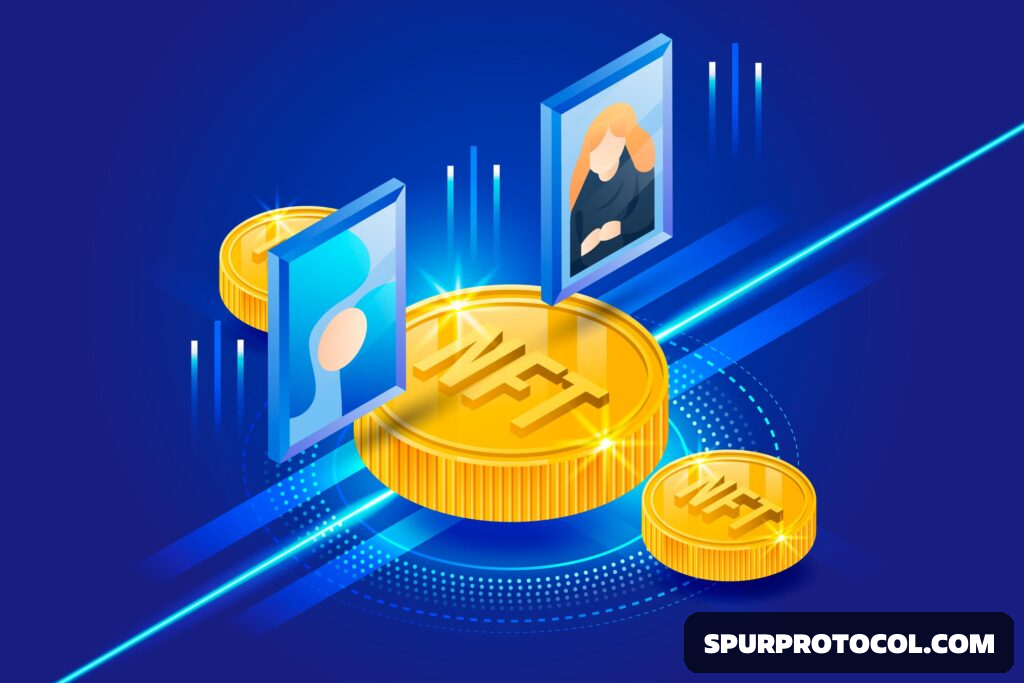What Are NFTs?
Non-Fungible Tokens (NFTs) are a type of digital asset that represents ownership of a unique item or piece of content. Each NFT is distinct and cannot be replicated, making it "non-fungible." NFTs are typically built on blockchain networks such as Ethereum, and they use smart contracts to ensure transparency, security, and immutability.
While NFTs can represent a wide range of digital assets—art, music, videos, virtual land, and even tweets—they are most commonly associated with digital art. NFTs allow artists to tokenize their creations, turning them into assets that can be bought, sold, and traded on blockchain platforms.
The Concept of Digital Ownership
Traditional ownership involves physical assets such as property, paintings, or real estate. Ownership of these assets can be transferred through a formal process, often recorded in a centralized registry. With digital ownership, however, the concept becomes more complex, as digital items are easily reproducible. In the digital world, NFTs provide a solution by offering a way to prove ownership and establish the scarcity of digital items.
When someone purchases an NFT, they are not just buying the item itself (e.g., a digital artwork) but the rights associated with it. This includes the ability to resell the NFT, trade it, or display it in a virtual environment. Through the blockchain, ownership is verified, and the transaction history of the NFT is permanently recorded, providing transparency and authenticity.
NFTs in the Art World
One of the most significant use cases for NFTs is in the art world. Artists can now tokenize their artwork and sell it directly to buyers without needing intermediaries like galleries or auction houses. NFTs have democratized access to art ownership, allowing anyone to buy, sell, or collect digital art pieces.
The transparency provided by blockchain technology ensures that the provenance of each artwork is recorded, allowing buyers to verify the authenticity and originality of the piece. Additionally, artists can program smart contracts into their NFTs, ensuring that they receive royalties each time their work is resold, providing them with a new revenue stream.
Some famous examples of NFT art include Beeple's digital collage "Everydays: The First 5000 Days," which sold for $69 million at a Christie's auction, and CryptoPunks, one of the earliest NFT projects, which has seen its artwork sold for millions of dollars.
NFTs in Virtual Real Estate
NFTs are also playing a significant role in virtual real estate. Virtual worlds, also known as metaverses, like Decentraland, Cryptovoxels, and The Sandbox, have emerged as platforms where users can buy, sell, and build on virtual land. In these metaverses, parcels of virtual land are represented by NFTs, allowing users to own a piece of the digital world.
Just like physical real estate, virtual land can be developed, rented, or resold. The ownership and transaction history of each virtual property are verified on the blockchain, making it possible to prove that the land belongs to a specific individual. These virtual real estate markets are rapidly growing, and NFTs are becoming a crucial tool for digital ownership in this space.
NFTs Beyond Art and Real Estate
While NFTs have made their mark in art and virtual real estate, their potential extends far beyond these sectors. NFTs can represent ownership of various digital assets, such as:
- Music and videos: Musicians and filmmakers can tokenize their content, allowing them to sell their works directly to fans.
- Collectibles: Digital collectibles, such as trading cards or in-game items, can be tokenized and traded as NFTs.
- Fashion: Fashion brands are exploring how NFTs can represent ownership of digital fashion items, allowing users to showcase their virtual clothing in online environments or metaverses.
NFTs are also finding applications in sectors like gaming, sports, and education, where they can be used to represent achievements, tickets, or other forms of exclusive access.
Challenges and Future of NFTs
While NFTs have revolutionized digital ownership, there are still challenges to overcome. Issues like high energy consumption, copyright infringement, and the environmental impact of blockchain networks are among the concerns facing the NFT market. However, as the technology evolves, solutions are being developed to address these challenges. Layer-2 solutions, such as Ethereum's Optimism and Arbitrum, are helping to reduce energy consumption and transaction fees, making NFTs more sustainable.
The future of NFTs looks promising, as the concept of digital ownership expands beyond art and virtual real estate. With increasing adoption in gaming, entertainment, and other sectors, NFTs are poised to become a key part of the digital economy.
Conclusion: A New Era of Digital Ownership
NFTs have introduced a new era of digital ownership, empowering creators and collectors to buy, sell, and trade unique digital assets in a decentralized and transparent manner. As the technology matures and new use cases emerge, NFTs have the potential to reshape industries and redefine the concept of ownership in the digital world.
References:
